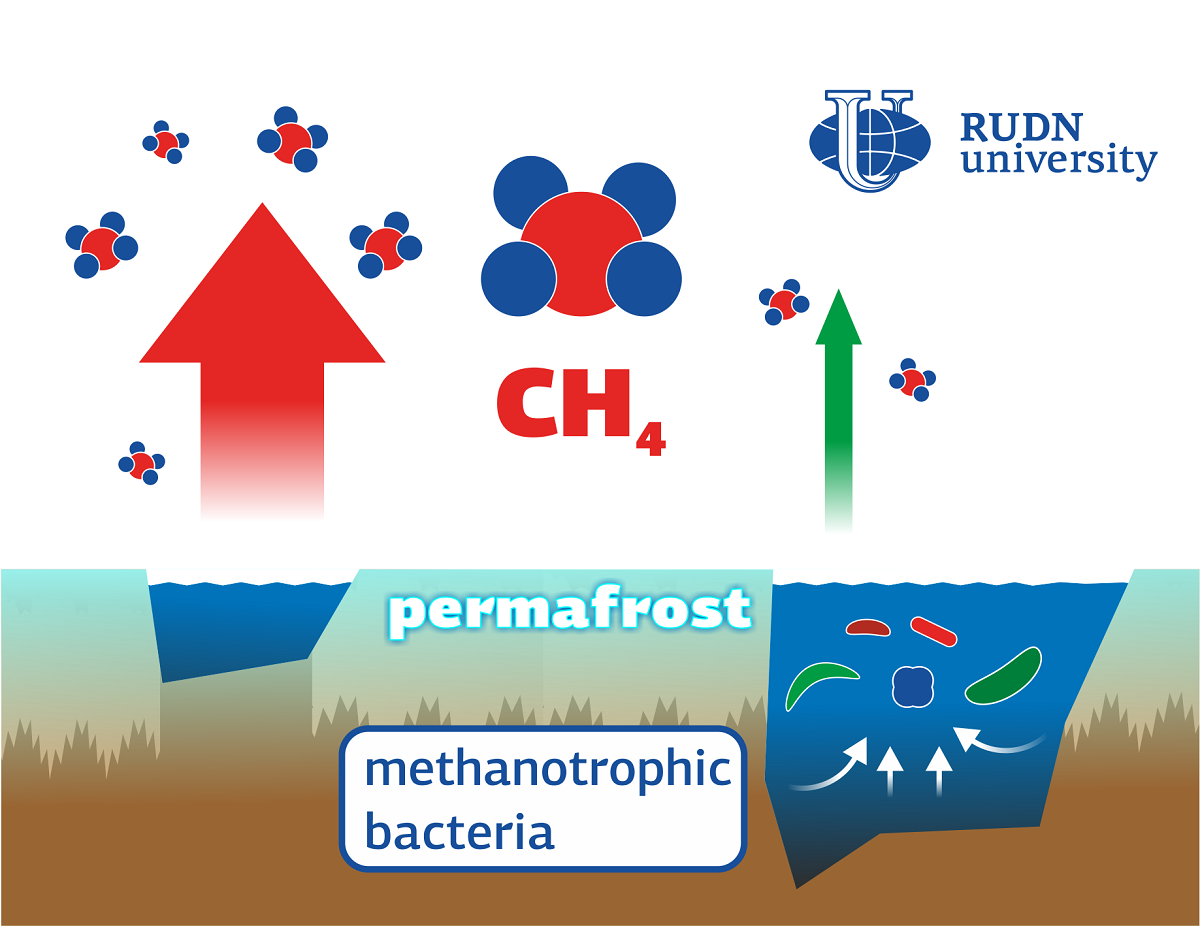Scientists Reveal the Water Column of the Yamal Lakes Can Be a Microbial Filter
The active formation of new lakes in the northern regions of the planet is associated with global warming. For example, in the Yamal tundra, new thermokarst lakes originate from the thawing of permafrost. The surface subsides in places where ground ice is thawing, and the depressions are immediately filled with water. Another option for the rapid formation of a new lake is the filling of craters with water, which are formed as the result of methane release from the permafrost. Such young lakes are usually shallow, unlike more mature lakes in the floodplains of rivers. But any lakes in the tundra are a source of methane, one of the greenhouse gases responsible for global warming.
“We can measure the concentration of methane in the water column of the lake; it has different origins. Some of it comes from within permafrost due to the development of taliks (unfrozen ground of the lakes), which were previously ‘locked’ by permafrost. Some is formed due to the metabolic activity of microorganisms in bottom sediments, the processing of organic matter. One way or another, the greenhouse gas rises from the bottom into the atmosphere through the water column. At the same time, part of it is transformed into carbon dioxide along the way. How much methane will eventually emit to the atmosphere depends largely on the activity of bacterial communities in this lake,” — Yury Dvornikov, PhD, junior researcher at the Center for Smart Urban Nature of the RUDN University.
To determine which lakes emit more methane to the atmosphere and why, scientists studied four lakes in the central part of Yamal. Two of them are typical shallow thermokarst lakes that appeared due to the thawing of ground ice, with a depth of about two meters and an area of 3.23 and 4.25 hectares. Others are significantly large, -their areas are 73.6 hectares and 118.6 hectares, and the depth reaches 12 meters. The origin of these two lakes is debatable, but their age is significantly greater since their basin is embedded in all geomorphological levels.
Scientists took 2-4 samples of water from each lake at different depths, and collected the sediments samples. They measured the content of methane, dissolved organic carbon, and major ions in all samples, and estimated the volume of bacteria. To determine their species, all DNA was collected from water samples.
The study showed the similar microbial communities in all lakes. But at the same time, the distribution of methane in the water column turned out to be different in deep and shallow lakes. In shallow lakes, the gas is distributed more evenly, and in deep lakes its amount varies — it is 2-10 times higher in the bottom layer than near the surface. Thus, the scientists came to the idea of a “microbial filter” for methane in mature deep lakes.
“In winter, most of the small lakes in Yamal freeze to the bottom, and in the deep ones, methane continues to accumulate under the ice. But in the summer, bacteria in deep lakes increase its processing dramatically. The water column with methanotrophic microbial communities plays the role of a filter: only a small part of the gas in deep lakes passes through it to the surface. This suggests the question of whether a lot of greenhouse gas is really released into the atmosphere from the surface of lakes in the north of Western Siberia. The easiest way to find out is to calculate the shares of the area of ‘young’ and ‘mature’ lakes. This is the goal of our future research, ” — Yury Dvornikov, PhD, junior researcher at the Center for Smart Urban Nature of the RUDN University.
The study is published in Biogeosciences.
Sergey Ivanov, a scholar from St. Petersburg, has been named the first winner of RUDN University’s International Prize for Scientific Achievements in Mathematics, worth 5 million rubles.
Products derived from microalgae represent a cutting-edge development in the field of bioeconomy. The potential of this biological resource was discussed at the international research seminar “Foundations for a Green Sustainable Energy”, part of the BRICS Network University’s thematic group on “Energy”. The event was organized by the Institute of Ecology at RUDN University.
Ambassadors of Russian education and science met at a conference in RUDN University to discuss how they can increase the visibility of Russian universities and research organizations in the world, and attract more international students in Russia.
